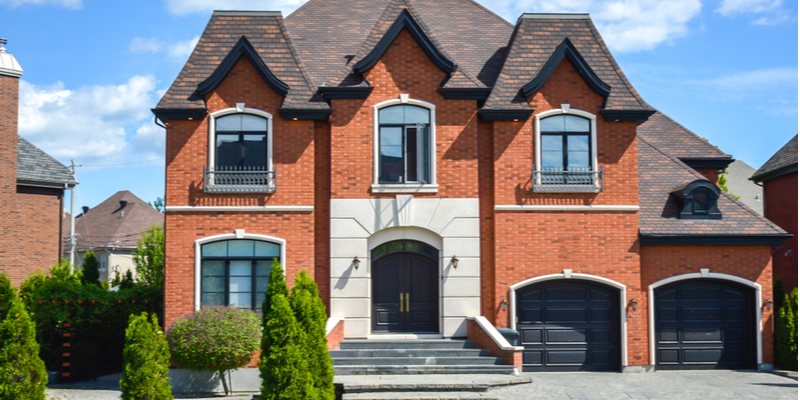Brick is well-loved as a building material which offers timeless beauty, along with durability, longevity, and low maintenance for homes and buildings. Brick structures date back thousands of years, with their earliest appearances in Turkey around 7000 B.C. The first bricks were clay blocks hardened in the sun and valued for their strength. Nearly 4,000 years later the ancient Romans, improved on the original design, firing clay bricks in kilns. Today, modern bricks are formed via extrusion, set, cut, and then fired creating strong, durable, and aesthetically pleasing uniform shapes.
In North America, colonial homes were constructed of double thick bricks, stacked, with a rock/rubble filled gap between them. In the 1800s, this type of construction was replaced with wood-framed structures with bricks forming the exterior walls. Today’s homes feature wood or metal frames, with bricks as the durable, attractive exterior walls.
Cost, Color, and Brick Design
When compared to other exterior options and siding, brick is often the more costly option in material costs as well as professional installation. Even so, brick offers a number of benefits as well as a variety of colors, textures, and available designs. Brick is available in many hues, black, white, gray, orange, rust, red, tan, and brown, as well as multicolored options which complement one another. Brick can also be painted for a uniquely custom look. The brick face (the exterior) offers multiple textures, and mortar colors allow for further customization.
The Benefits of a Brick Exterior
Homes adorned with a brick exterior are not only beautiful but offer a number of other benefits. Brick exteriors increase the value of your property and are a major selling plus when the time comes. Plus because bricks are made from clay, an abundant natural resource, bricks are considered an environmentally friendly building material. Brick is not affected by moisture, absorbing and releasing water naturally, and brick is also fire-resistant, weather resistant, and termite resistant, all of which can work together to decrease homeowner insurance rates.
Given its strength and durability, brick exteriors do not dent or break like other forms of siding. On top of that brick is great insulator, keeping temperatures within consistently warmer in cool temperatures and cooler in the hotter months. As an insulator, brick also reduces sound transmission, alleviated outside noises from traffic or construction or noisy neighbors. Brick homes offer easy maintenance, often only requiring occasional washing in the first few decades. With bricks there is no decay or repainting (unless you have chosen to paint your bricks) but only the occasional repair of loose or chipped bricks.
A Few Notes About Brick Exteriors
The bricks used for residential properties are called modular or face bricks. They feature a uniform size and unlike pavers, they are not solid but feature vertical openings which when filled with mortar help make the bond between bricks stronger.
Brick homes feature bricks placed over the vapor resistant membrane attached to the plywood sheathing. The brick exterior is secured with brick ties (metal anchors) to the frame. Mortar then secures the bricks further while allowing for proper drainage.
Brick, as mentioned is low maintenance and long-lasting, but there are steps you can take to keep it in tip-top shape. Clean your brick exterior by simply spraying with water from the garden hose. Pressure washers can damage brick and mortar. For efflorescence (stains from moisture or humidity which appear chalky) spray with white vinegar, wait 15 minutes, and rinse with water from the hose. When bricks or mortar show signs of needing repair, call on the masonry experts at Turnbull Masonry to get the job done right.

